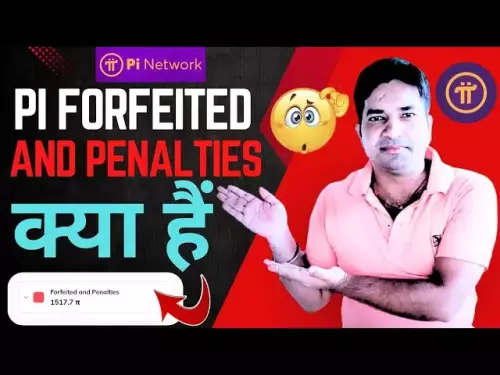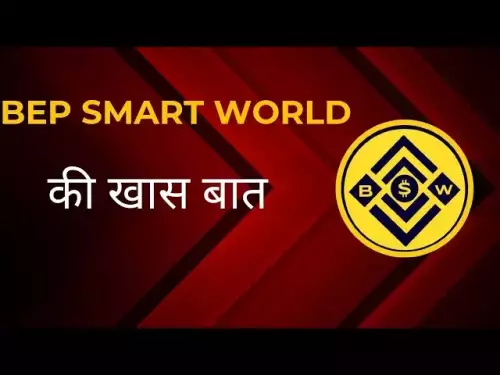 |
|
 |
|
 |
|
 |
|
 |
|
 |
|
 |
|
 |
|
 |
|
 |
|
 |
|
 |
|
 |
|
 |
|
 |
|

The article "Simplifying the L1" by Vitalik Buterin, compiled by lenaxin and ChainCatcher, focuses on the importance of protocol simplicity in maintaining the scalability and resilience of Ethereum.
While scalability is a crucial aspect, often discussed in terms of Layer 2 (L2) rollups and scaling solutions, simplicity plays a vital role in both scalability and overall system health.
The article highlights how Bitcoin's minimal protocol, focusing on coins moving between unspent outputs, forms the core logic of the system, which even a clever high school student can understand. Programmers have also written Bitcoin clients as hobby projects, showcasing the accessibility of the protocol.
Simplicity provides a key advantage for a blockchain aiming to become a globally recognized neutral foundational layer, like Bitcoin or Ethereum.
Historically, Ethereum has often failed to stick to the principle of simplicity in protocol design, partly due to Buterin's own decisions, which has directly led to high research and development costs, frequent security vulnerabilities, and a closed development culture. The root of these problems often lies in the pursuit of short-term gains that have been proven ineffective in practice.
This article will explain how Ethereum can achieve a level of protocol simplicity close to that of Bitcoin in the next five years.
Simplifying the Consensus Layer
The new consensus layer proposal (formerly named "Beam Chain") aims to integrate research achievements from the past decade in consensus theory, zero-knowledge proofs (ZK-SNARK), staking economics, and other fields to construct an optimal consensus mechanism for Ethereum aimed at long-term development.
Compared to the existing beacon chain, this proposal features significantly simplified characteristics, specifically reflected in the following aspects:
* It adopts a three-slot finality model (3SF) to simplify the complexity of the common coin and beacon chain synchronization.
* It introduces a new PoS (Proof of Stake) variant named "HyPoS" to combine the advantages of standard PoS and PoS with common coins, aiming for better performance in the Byzantine fault tolerance (BFT) setting.
* It adopts a modular design pattern, integrating ZK-SNARKs to efficiently verify the execution layer and simplify the consensus layer.
* It simplifies the structure of the state and adopts a binary Merkle tree to improve the efficiency of light clients.
* It adopts a more efficient and concise data availability (DAS) sampling technique.
* It introduces a new type of aggregate signature scheme to reduce the communication overhead and improve throughput.
* It adopts a simpler and more efficient slot scheduling algorithm.
* It streamlines the handling of slashing conditions and reduces the occurrence of slashing cases.
* It employs a more efficient and easily deployable upgrade mechanism.
* It adopts a more flexible and extensible architecture to support future innovations.
This new consensus layer will provide the underlying foundation for the next stage of Ethereum's development, and its simplicity and efficiency will be crucial in ensuring the long-term scalability, security, and decentralization of the Ethereum ecosystem.
Simplifying the Execution Layer
The complexity of the Ethereum Virtual Machine (EVM) continues to grow, with many complex designs proving unnecessary (in many cases due to my decision-making errors):
* A 256-bit virtual machine overly optimized for specific cryptographic algorithms, which have gradually lost importance.
* Over-designed precompiled contracts for single-use scenarios that are rarely utilized.
* An attempt to patch existing problems in a piecemeal fashion is no longer feasible. Removing the SELFDESTRUCT opcode requires significant effort but yields limited benefits, and recent debates about EOF further highlight the difficulties of making incremental modifications to the virtual machine.
As an alternative, I recently proposed a more radical transformation path: rather than making medium-scale (but still disruptive) modifications to the EVM for a 1.5x performance boost, it would be better to transition directly to a new and significantly superior virtual machine architecture for a hundredfold performance leap. Similar to The Merge, we aim to reduce the number of disruptive changes while enhancing the strategic value of each change.
Specifically, I suggest adopting the RISC-V architecture or the virtual machine used by Ethereum's ZK proof programs to replace the existing EVM. This transformation will bring:
* A significant reduction in the virtual machine's complexity, simplifying the protocol and reducing the occurrence of vulnerabilities.
* Improved efficiency and performance, enabling faster transactions and lower gas fees.
* Enhanced programmability and flexibility, allowing for the development of more advanced and sophisticated dapps.
* Greater interoperability with other blockchains and ecosystems.
* A more vibrant and active developer community.
The main challenge lies in the fact that, unlike the immediately implementable EOF solution, the new virtual machine will take longer to benefit developers. A short
Clause de non-responsabilité:info@kdj.com
Les informations fournies ne constituent pas des conseils commerciaux. kdj.com n’assume aucune responsabilité pour les investissements effectués sur la base des informations fournies dans cet article. Les crypto-monnaies sont très volatiles et il est fortement recommandé d’investir avec prudence après une recherche approfondie!
Si vous pensez que le contenu utilisé sur ce site Web porte atteinte à vos droits d’auteur, veuillez nous contacter immédiatement (info@kdj.com) et nous le supprimerons dans les plus brefs délais.
-

-

-

- Mining en nuage, contrats à haut rendement et volatilité du marché: une prise de New Yorker
- Sep 29, 2025 at 03:55 pm
- Exploration de l'intersection de l'exploitation minière du nuage, des contrats à haut rendement et de la volatilité du marché, avec des informations sur la façon dont les investisseurs quotidiens peuvent naviguer dans ce paysage.
-

-

- Inflation et co-partage des jetons de bébé: une nouvelle ère pour Babylon
- Sep 29, 2025 at 03:51 pm
- Babylone ajuste stratégiquement son tokenomique pour bébé, en se concentrant sur la réduction de l'inflation et des mécanismes de création de co-co-innovants pour aligner le bitcoin et les détenteurs de bébés.
-

- DoGECOIN, ETFS et Memecoins: naviguer dans le battage médiatique dans le monde sauvage de la crypto
- Sep 29, 2025 at 03:51 pm
- Des ETF de DoGECOIN à Moonbull Presales, le marché Memecoin bourdonne. Mais est-ce tout hype? Plongeons dans les tendances et ce que tout cela signifie pour les investisseurs.
-

- Bitcoin, Ethereum, ETF: naviguer dans le courant de la cryptographie sur un marché changeant
- Sep 29, 2025 at 03:51 pm
- Les ETF Bitcoin et Ethereum font face à des sorties au milieu de l'incertitude du marché, tandis que des altcoins comme Solana et XRP gagnent en traction. Est-ce une baisse temporaire ou un signe d'un changement plus large?
-

-

- Kvardinai: révolutionner le commerce électronique avec Metaverse et Blockchain Trust dirigés par AI
- Sep 29, 2025 at 03:49 pm
- Kvardinai transforme le commerce numérique en fusionnant l'IA et la blockchain pour créer une expérience d'achat métaverse de confiance et immersive. Explorez comment les jetons KRN et les assistants en IA modifient le commerce de détail en ligne.





























































